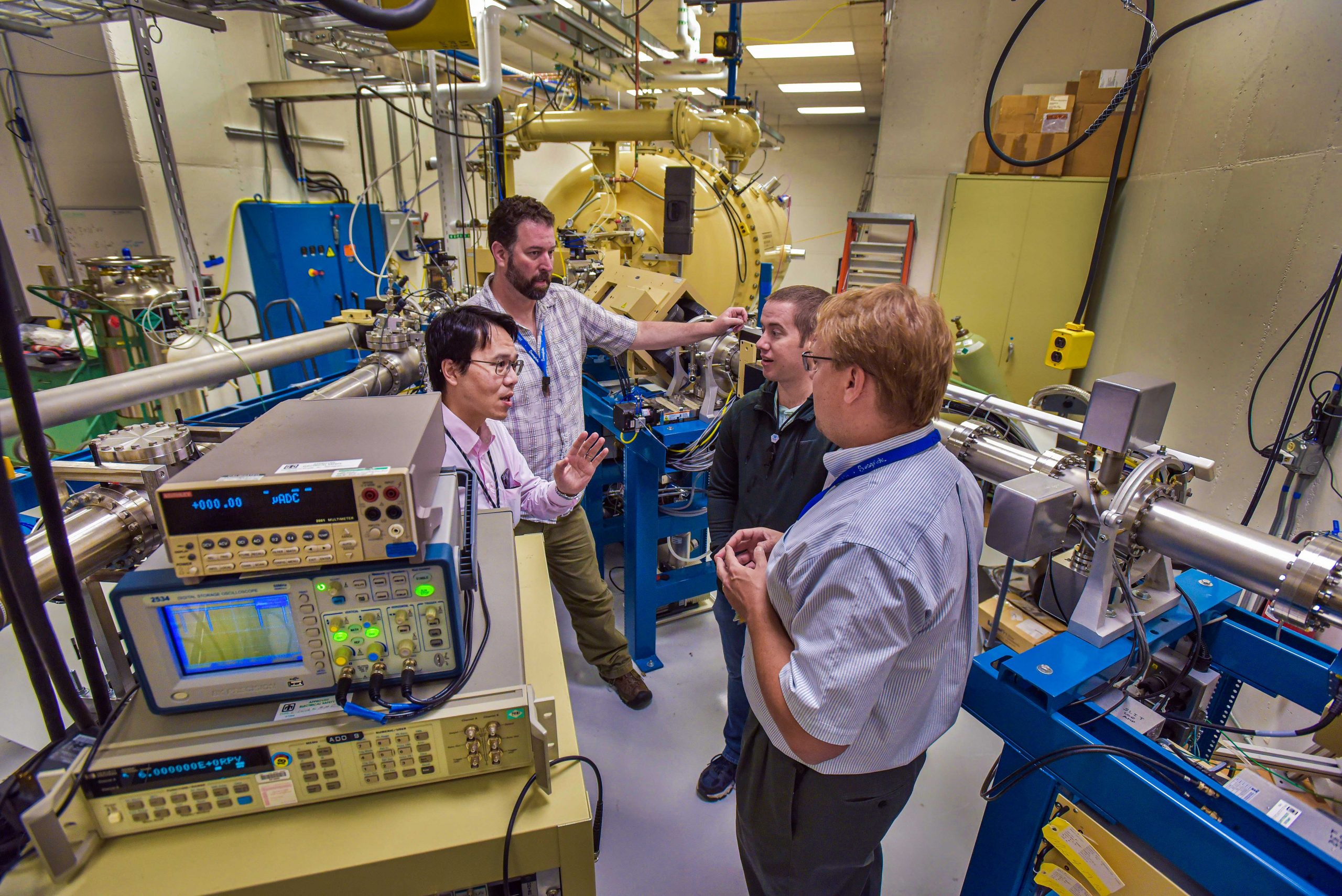
Imaging tool under development exposes concealed detonators — and their charge
A research team led by Yuan-Yu Jau at Sandia National Labs (SNL) has developed quantum-enabled electric-field (E-field) sensing/imaging capabilities that provide unprecedented electric field sensitivity and direct visualization of electric field inside a physically isolated, shielded, or occupied space, which cannot be achieved with any other existing technologies. These new quantum technologies exploit the quantum properties of atoms and neutrons and have been demonstrated in proof-of-concept experiments. Currently, the team is working on further improvement of these novel technologies toward field-deployable systems. The impact may include new communication techniques, new remote sensing capabilities, and new metrological/diagnostic tools for various kinds of basic science research, engineering troubleshooting, and as well as security screening.
Areas of Research
Atomic E-field sensor
The highly excited quantum states (Rydberg states) of an atom are easily perturbed by electric fields due to the associated, large, induced dipole moments. In the past decade, the vapor-cell-based Rydberg atomic electrometers have been broadly demonstrated as traceable standards for electric fields at RF/microwave frequency range. On the other hand, the vapor-cell-based quasi-DC, low-frequency (<<10 kHz) atomic electrometry was rarely investigated until the recent work at SNL. In the conventional electronic sensing approaches, E-field detection performs much better at higher frequency rather than at lower frequency owing to the fact that the sensitivity degrades rapidly if antenna size is much smaller than the wavelength. In contrast, the Rydberg E-field sensing technology has no such limitation. In general, atomic sensors (magnetometer, accelerometer, gyroscope, electrometer) perform better at low detection frequencies compared to the electronic technologies. By minimizing the inner-surface conductivity of the vapor cell and using optically induced DC bias (DC heterodyne), SNL demonstrates Rydberg electrometry at quasi-DC/low-frequency range with much better sensitivity that other existing E-field sensing technologies cannot achieve (Fig. 1). A schematic of the sensitive quasi-DC atomic electrometry experiment is illustrated in Fig. 2. Owing to the very high E-field sensitivity, SNL’s quasi-DC atomic electrometry experiment can easily detect charge signatures as shown in the video (Fig. 3). For first time, an alkali-vapor cell is demonstrated as a very sensitive quasi-DC electric field or charge sensor.
Neutron E-field imaging
Electric-field imaging was an outstanding problem, because the use of an E-field sensor can only work for mapping the electric field in an unoccupied space, and the imaging resolution is limited by the sensor size. In the situation when the electric field is physically isolated or inside an occupied space, a very sensitive E-field sensor may be used to measure the emanated electric fields from the sources, but the inverse problems of the electric field are mostly ill posed. If the electric fields are shielded, a passive E-field sensor is completely useless. SNL has made a scientific and technical breakthrough to directly visualize electric field even that is inside a metal box by utilizing electrically neutral particles. Combining the quantum property of neutrons and the relativistic effect, spin-polarized neutrons can be used as an active probe to image electric field as shown in Fig. 4. A proof-of-principle experiment is demonstrated, and the experimental schematic and the electric-field testing device are illustrated in Fig. 5. The conventional transmission neutron imaging allows us to see the geometrical and the structural information of the imaging target as shown on the left of Fig. 6. The neutron E-field imaging technique reveals the polarity, strength, and distribution of the electric field as shown on the right of Fig. 6. For first time, penetrative electric field imaging technique is demonstrated.
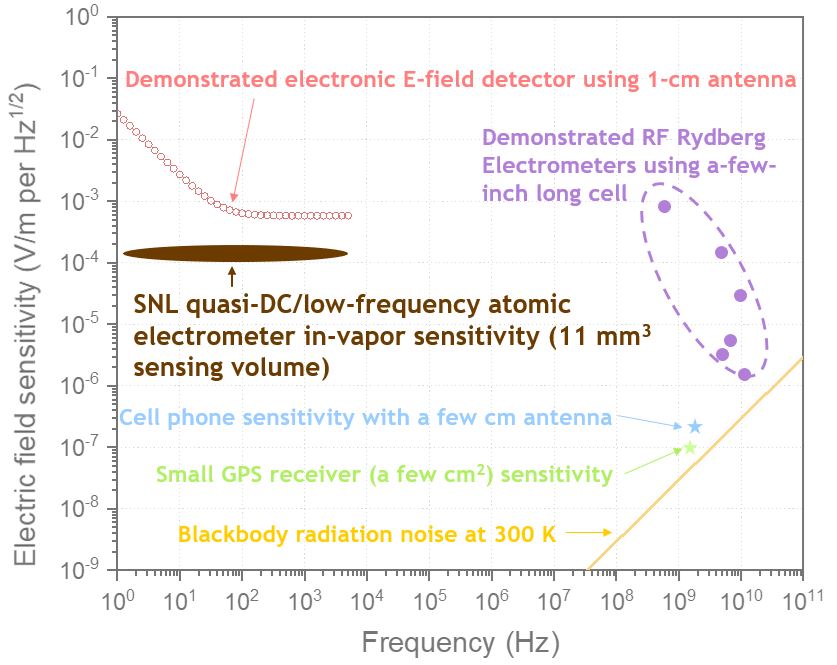
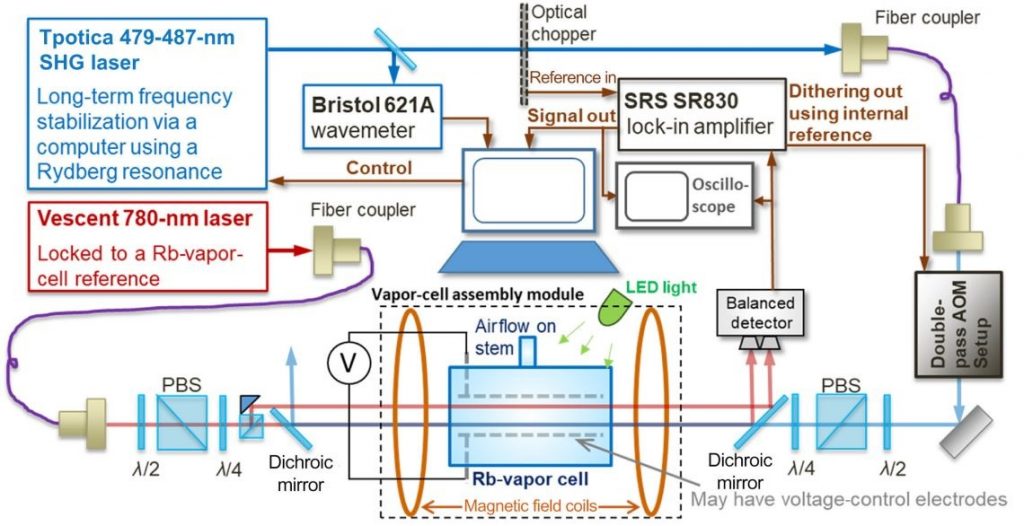
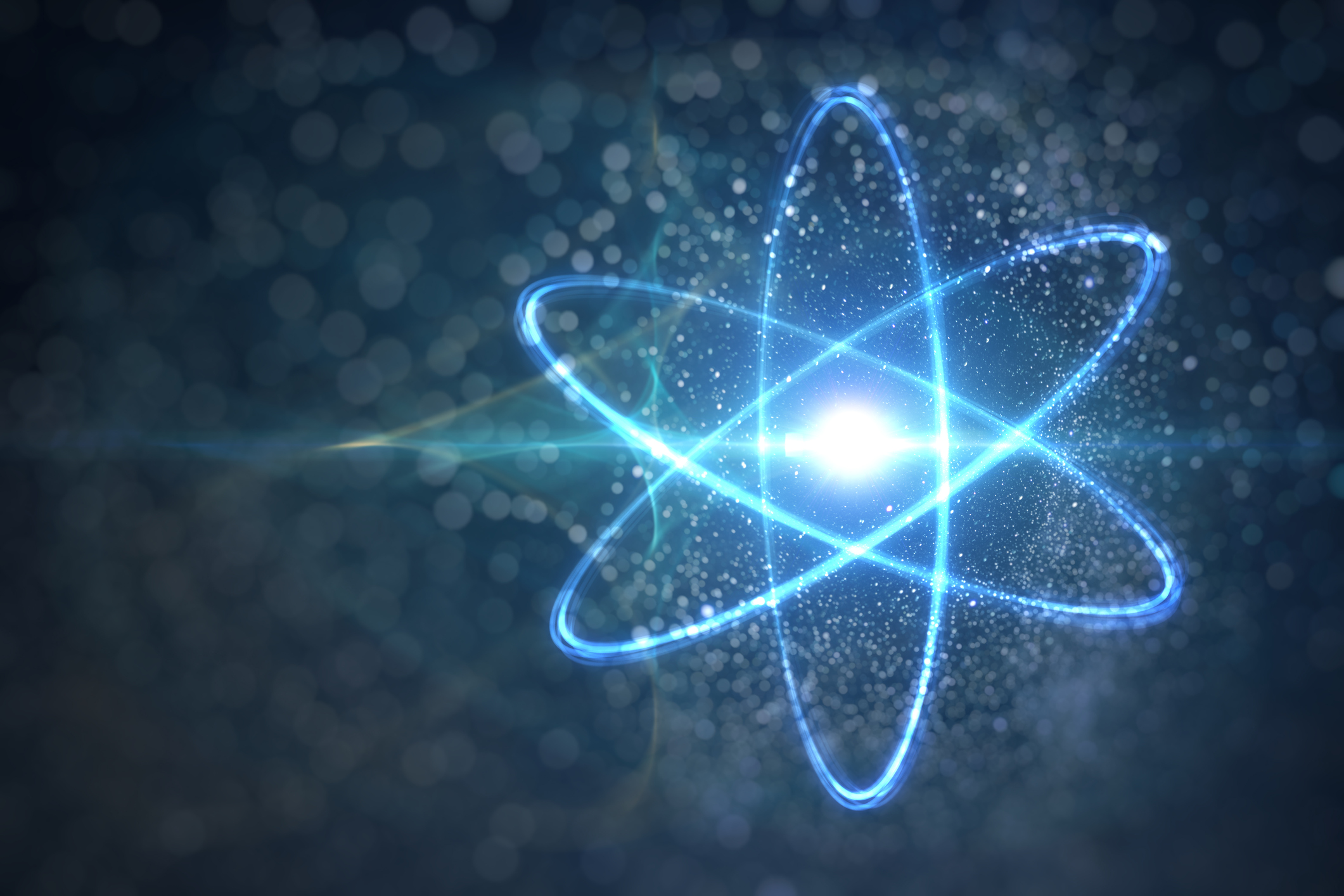
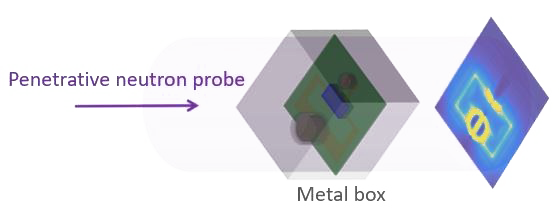

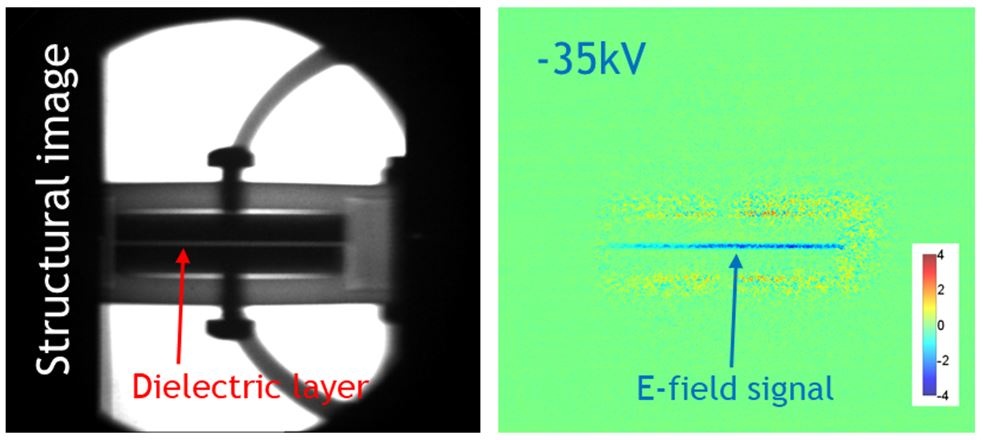
Publications:
1. Yuan-Yu Jau and Tony Carter, “Vapor-Cell-Based Atomic Electrometry for Detection Frequencies below 1 kHz,” Phys. Rev. Applied 13, 054034 (2020).
2. Yuan-Yu Jau, Daniel Hussey, Thomas Gentile, and Wangchun Chen, “Electric Field Imaging Using Polarized Neutrons,” Phys. Rev. Lett. 125, 110801 (2020).
Patent applications:
1. LOW-FREQUENCY ATOMIC ELECTROMETRY, US 17/531,306
2. DETECTION AND IMAGING OF ELECTRIC FIELDS, USING POLARIZED NEUTRONS, US 17/740,504
Miscellaneous
Both atomic electric-field (E-field) sensing and neutron E-field imaging were funded by SNL’s Laboratory Directed Research & Development (LDRD) Program. The proof-of-principle experimental demonstration of the polarized-neutron E-field imaging was conducted at NIST Center for Neutron Research (NCNR). This result was highlighted in the NCNR annual report https://nvlpubs.nist.gov/nistpubs/SpecialPublications/NIST.SP.1274.pdf on page 34.